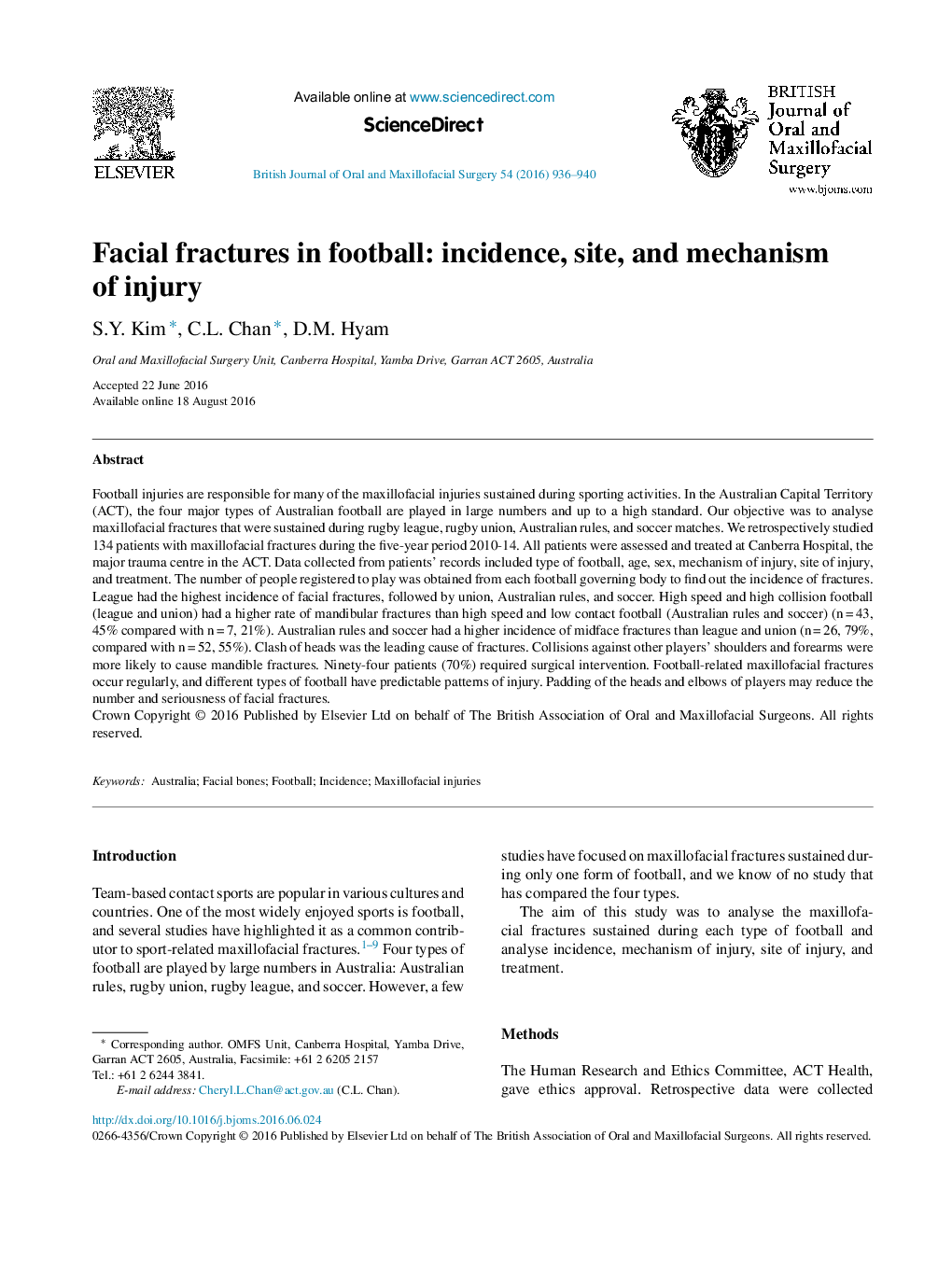| Article ID | Journal | Published Year | Pages | File Type |
|---|---|---|---|---|
| 5638671 | British Journal of Oral and Maxillofacial Surgery | 2016 | 5 Pages |
Football injuries are responsible for many of the maxillofacial injuries sustained during sporting activities. In the Australian Capital Territory (ACT), the four major types of Australian football are played in large numbers and up to a high standard. Our objective was to analyse maxillofacial fractures that were sustained during rugby league, rugby union, Australian rules, and soccer matches. We retrospectively studied 134 patients with maxillofacial fractures during the five-year period 2010-14. All patients were assessed and treated at Canberra Hospital, the major trauma centre in the ACT. Data collected from patients' records included type of football, age, sex, mechanism of injury, site of injury, and treatment. The number of people registered to play was obtained from each football governing body to find out the incidence of fractures. League had the highest incidence of facial fractures, followed by union, Australian rules, and soccer. High speed and high collision football (league and union) had a higher rate of mandibular fractures than high speed and low contact football (Australian rules and soccer) (n = 43, 45% compared with n = 7, 21%). Australian rules and soccer had a higher incidence of midface fractures than league and union (n = 26, 79%, compared with n = 52, 55%). Clash of heads was the leading cause of fractures. Collisions against other players' shoulders and forearms were more likely to cause mandible fractures. Ninety-four patients (70%) required surgical intervention. Football-related maxillofacial fractures occur regularly, and different types of football have predictable patterns of injury. Padding of the heads and elbows of players may reduce the number and seriousness of facial fractures.
